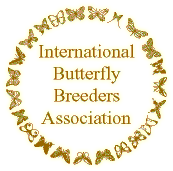More Interesting Facts About The Monarch Butterfly
Another amazing fact about the Monarch Butterfly, has to do with their taste.
The Monarch caterpillar will only eat the leaves from the milkweed plant.
There's a chemical in the Milkweed called * Cardenolide Aglycones, which is a type of steroid.
The caterpillar ingests this, and passes the chemical onto the adult butterfly.
If a Monarch Butterfly is eaten by a bird, or any other predator, it will make them vomit.
The bird will avoid all Monarchs after that. The Monarch advertizes its foul taste with its bright orange colour.
The bright orange colour, with black veins and outer margin, warns potential predators not only of its bad taste,
but also that it will make them sick. This phenomenon is called * aposematism .
There are a couple of birds that are immune to Cardenolide Aglycones, they are the Black-backed Oriole, and the Black-headed Grosbeak, who account for up to 60% of all Monarchs killed by predators. Other predators include frogs, mice, and lizards.
The Monarch is the only butterfly that migrates both north and south, like birds do. There are four generations of Monarchs each year. The first three generations live for Only about six week seach , but the fourth generation can live for as long as six to eight months.
It's this generation that migrates. Starting in late August and going to mid October thousands of Monarchs start their long migration to the Mariposa Monarca Biosphere Reserve in Central Mexico, With the exception of Monarchs that are born on the west side of the Rocky Mountains. These will migrate to several spots in Califonia. Most notably Pacific Grove, and Santa Cruz.
During the migration from the north to the south ( southern Canada, and the northern U.S.), the Monarch goes into a phase of non-reproduction called Diapause.
During Diapause, the Monarch butterfly will Migrate to its over wintering spot, Diapause will last until February or March, when the Overwintering is complete, and a mating frenzy occurs, on their way back north, and the cycle starts again.
There are a couple of birds that are immune to Cardenolide Aglycones, they are the Black-backed Oriole, and the Black-headed Grosbeak, who account for up to 60% of all Monarchs killed by predators. Other predators include frogs, mice, and lizards.
The Monarch is the only butterfly that migrates both north and south, like birds do. There are four generations of Monarchs each year. The first three generations live for Only about six week seach , but the fourth generation can live for as long as six to eight months.
It's this generation that migrates. Starting in late August and going to mid October thousands of Monarchs start their long migration to the Mariposa Monarca Biosphere Reserve in Central Mexico, With the exception of Monarchs that are born on the west side of the Rocky Mountains. These will migrate to several spots in Califonia. Most notably Pacific Grove, and Santa Cruz.
During the migration from the north to the south ( southern Canada, and the northern U.S.), the Monarch goes into a phase of non-reproduction called Diapause.
During Diapause, the Monarch butterfly will Migrate to its over wintering spot, Diapause will last until February or March, when the Overwintering is complete, and a mating frenzy occurs, on their way back north, and the cycle starts again.




